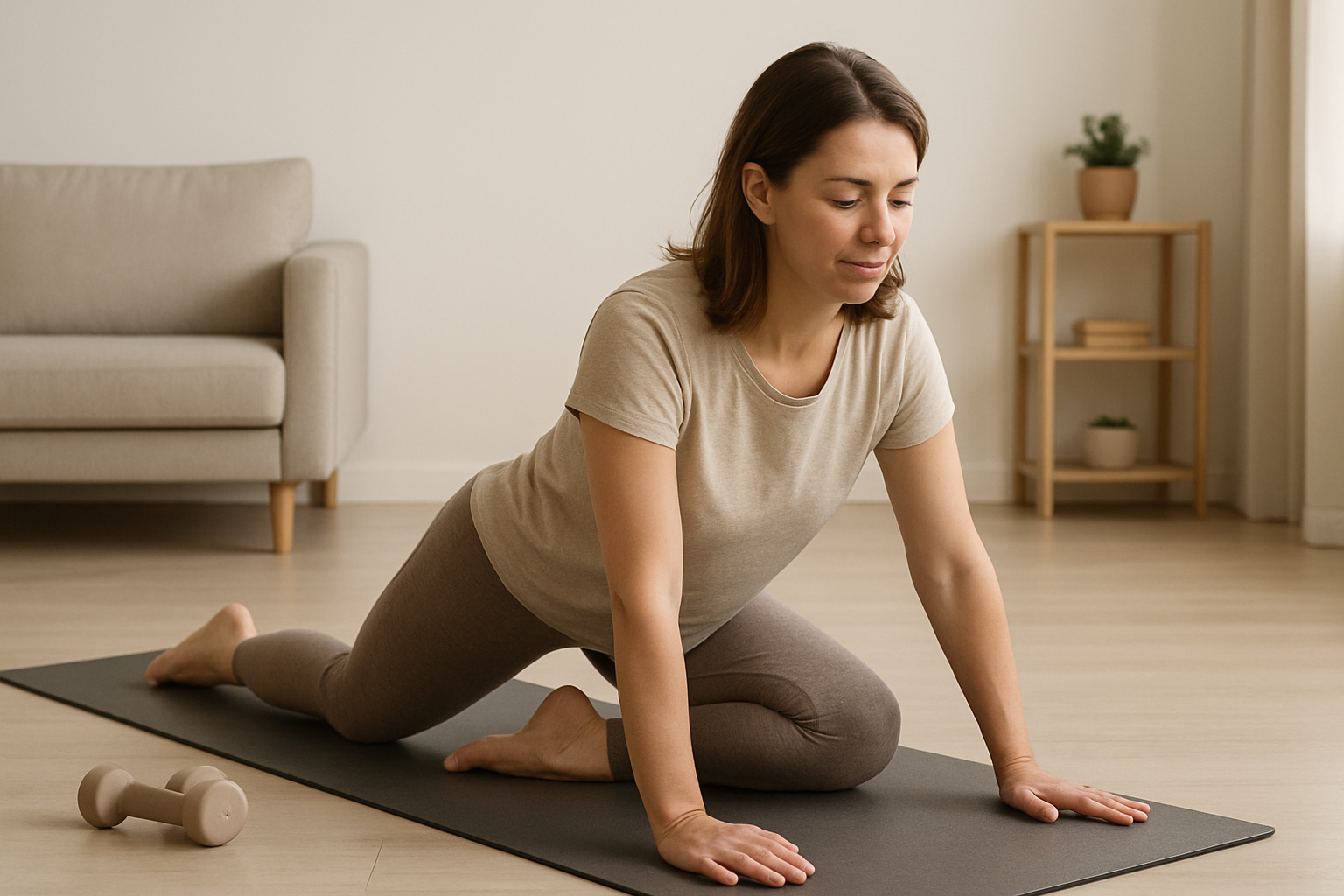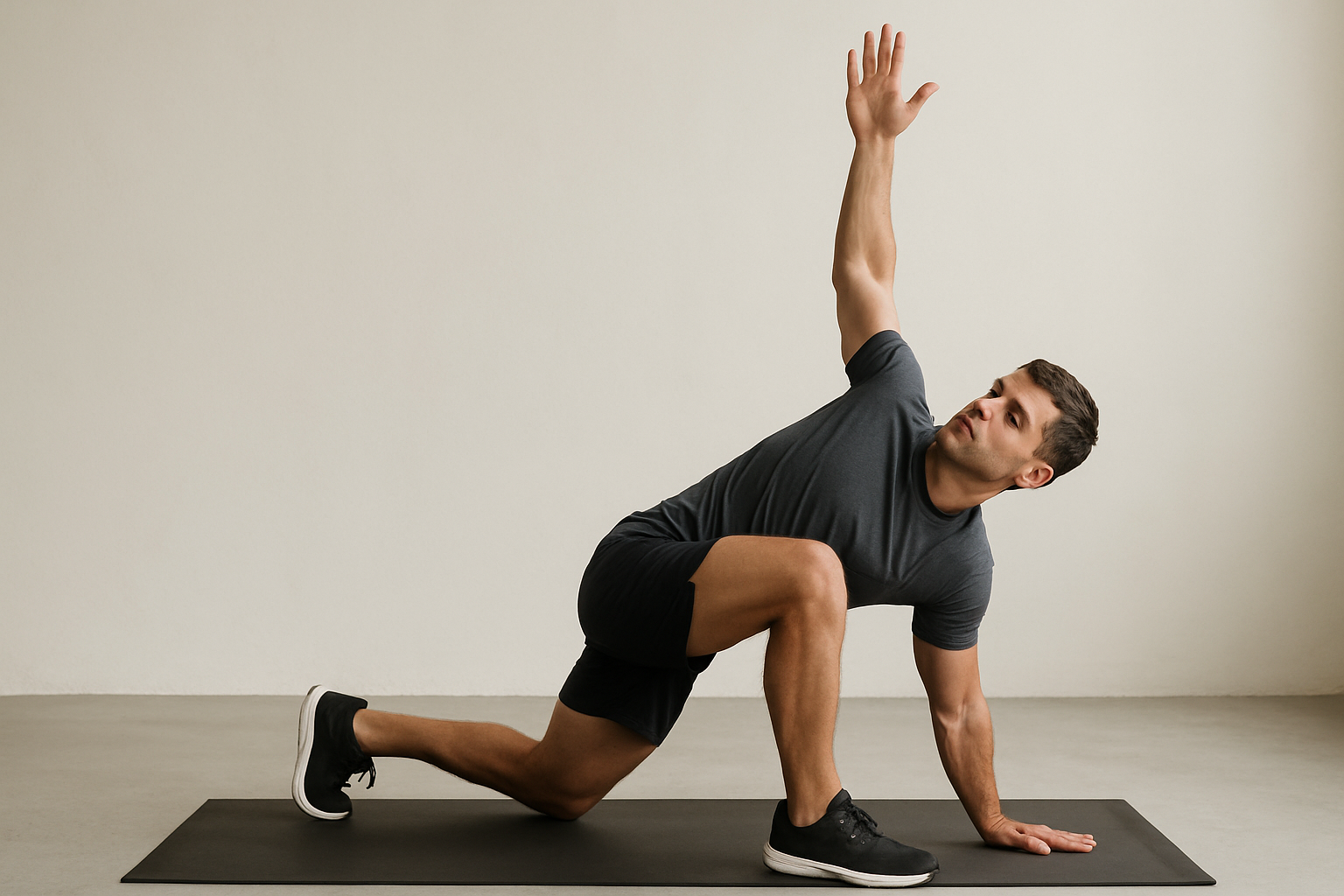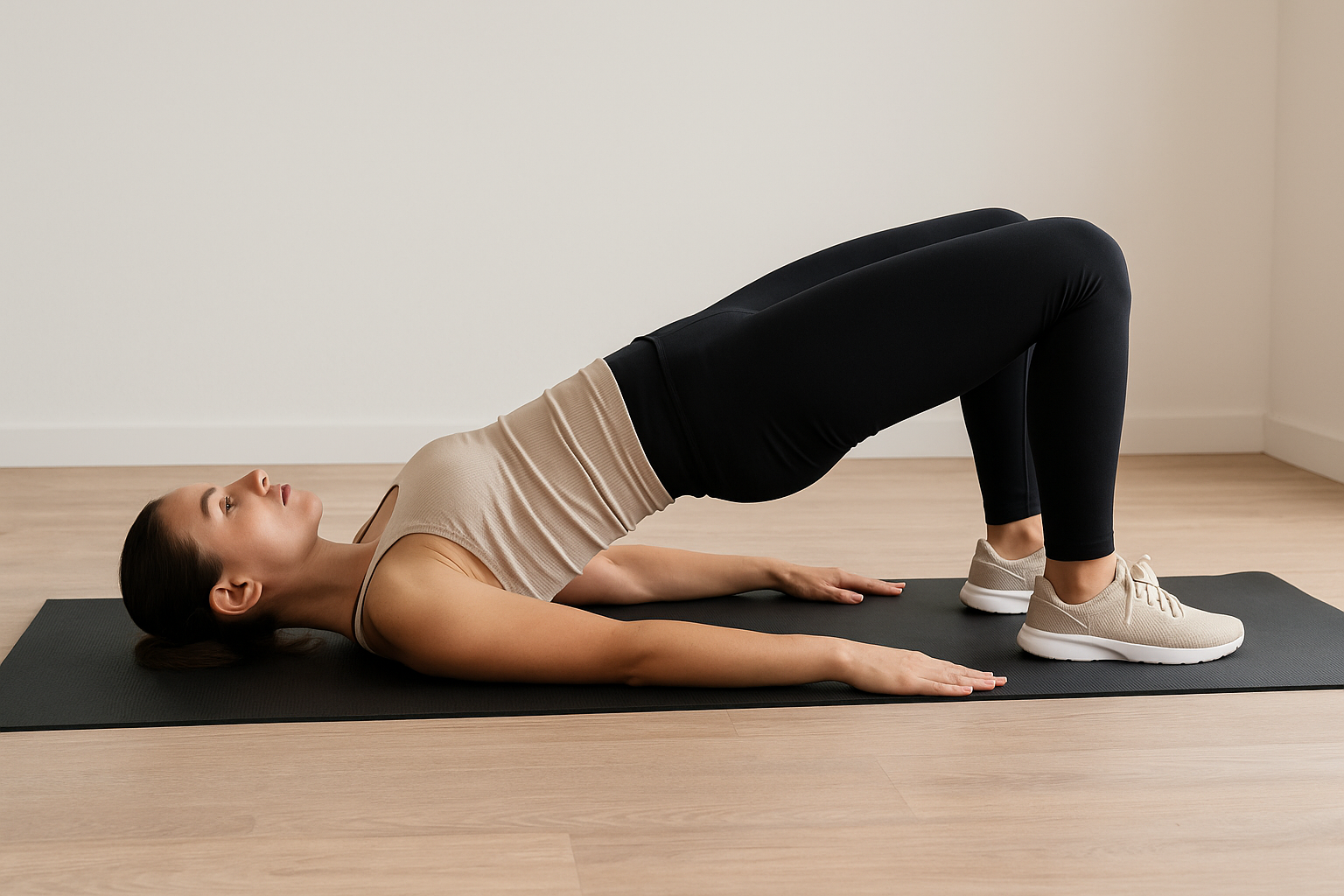The 12-Minute Warm-Up For Any Home Workout
The 12-Minute Warm-Up For Any Home Workout
A smart warm-up boosts performance, improves mobility and helps reduce injury risk — all in under 12 minutes. Use this simple, science-backed template before strength, cardio or HIIT sessions at home.

Why warm up?
- Raises body temperature and heart rate so muscles contract more efficiently.
- Opens usable range of motion around key joints (hips, shoulders, ankles, T-spine).
- Activates stabilisers (glutes, core, upper back) so big lifts and faster efforts feel smoother.
- Rehearses movement patterns you’ll use in the session.
The 12-minute warm-up (minute-by-minute)
Move through each block in order. Keep breathing steady and aim for light effort building to moderate by the end.
0:00–2:00 — Pulse-raiser
- Options: brisk march, step-jacks, light jog on the spot, fast step-ups on a low step, or skipping without a rope.
- Cues: tall posture, relaxed shoulders, nasal breathing if comfortable.
2:00–4:00 — Joint prep (10–15 reps each)
- Neck nods and gentle turns (pain-free range only).
- Shoulder rolls and arm circles (both directions).
- Thoracic rotations: hands together at chest, rotate left/right.
- Hip circles and leg swings (front–back, side–side, hold a chair if needed).
- Ankle rolls and calf pumps (heels down/up).

4:00–7:00 — Mobility flow (2 rounds)
- Cat–cow: 6 slow reps.
- World’s Greatest Stretch: step into a lunge, hand to floor, rotate towards front knee, switch sides.
- Deep squat pry: sink into a comfortable squat, elbows inside knees, gentle prying for 20–30s.
- Hamstring sweep: from a half-lunge, straighten front knee, sweep hands towards toes, alternate sides.
Chair-friendly alternatives: seated cat–cow, seated thoracic rotations, supported squat to chair, standing hamstring hinge with hands on hips.
7:00–10:00 — Activation and patterning (2 sets)
- Glute bridge x 10–12 (pause 1–2s at the top). Progression: single-leg bridge x 6–8/side.
- Band pull-aparts or scap retractions x 10–15. No band? Squeeze shoulder blades together for 2s, relax.
- Dead bug x 6–8/side. Option: marching plank holds x 10–20s.
- Hip hinge drill x 8–10 (hands on hips, push hips back, soft knees). Option: light Romanian deadlift with a backpack.

10:00–12:00 — Session-specific ramp
Pick 2 moves that mirror your session. Do 2 rounds, gradually increasing speed or range to an effort of about 6–7/10.
- Strength day: air squats → tempo squats (2s down), incline push-ups → floor push-ups, hip hinges with light load.
- Cardio day: fast marching → light jog, step-jacks → jumping jacks, shadow boxing.
- HIIT/plyo day: squat to reach → squat hops, alternating reverse lunges → quick switches, pogo jumps (small bounces).
Match the warm-up to your workout
- Lower-body strength focus: add 1 extra set of glute bridges and bodyweight lunges.
- Upper-body strength focus: add band rows or face pulls and incline push-ups.
- Running or ride session: extend the pulse-raiser to 4–5 minutes and finish with 2 × 20s strides/spins at moderate pace.
Only got 5 minutes? (Express version)
- 1 min pulse-raiser.
- 1 min joint prep (shoulders, hips, ankles).
- 1.5 min mobility flow: cat–cow, lunge rotation, hamstring sweep.
- 1 min activation: bridges + pull-aparts or scap squeezes.
- 30s session-specific ramp.
Beginner and joint-friendly tweaks
- Keep everything low impact: marches, step-outs, supported squats to a chair.
- Shorten ranges to comfortable, pain-free movement; never force a stretch.
- Use supports (wall, countertop, chair) for balance during hinges and lunges.
Common mistakes to avoid
- Skipping the ramp-up and going straight to max effort.
- Static, painful stretching before you’re warm. Prefer dynamic movement first.
- Rushing through reps without control or breathing.
Quick checklist you can screenshot
- 2 min pulse-raiser
- 2 min joints (neck/shoulders/T-spine/hips/ankles)
- 3 min mobility flow
- 3 min activation (glutes/core/scaps + hinge)
- 2 min session-specific ramp to 6–7/10 effort
FAQs
How hard should a warm-up feel?
Finish around 6–7/10 effort: a little warm and lightly breathing, but not fatigued.
Can I use a foam roller?
Yes — 2–3 minutes at the start can help if you’re stiff, then move into this plan.
What if space is limited?
Do marching, step-outs, hinges and wall push-ups; rotate and lunge in place.
If you have a current injury or medical condition, check with a healthcare professional before starting a new routine.